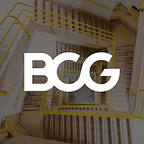IT Spending Pulse #5: Slowing spending, leaner growth
Authored by: Federico Fabbri, Clark O’Niell, and Ryan Barbaccia.
IT leaders are facing a double-headed challenge for 2023: Transforming their organizations digitally while controlling costs. While IT spend is still planned to increase by 3.1% in 2023, there is an increase in the number of respondents who plan to decrease IT spend (19% vs 15%) compared to respondents surveyed six months ago in July 2022. Moreover, almost all of the IT stack is experiencing supplier consolidations, as IT buyers are moving towards a smaller vendor-base. Expectations of price increases from suppliers have lowered slightly as well since July 2022. Amidst this slowdown, digital transformations remain atop the priority list for 60% of IT buyers, who remain committed to increasing spending in cloud services, security, and analytics. The need to evolve these digital capabilities is, however, coupled with an increasing focus on controlling IT costs to drive efficiencies.
This survey was conducted during December 2022 with ~450 IT buyers. 55% respondents were from North America and 45% respondents were from Europe, all across diverse verticals. Respondents are at Director / Senior Director level and above; they all possess a clear view of company IT priorities & budgets. Roughly 67% of them work in large (>$1B) size companies and 33% in mid-sized companies.
Lean growth and transformation
In our four previous surveys, conducted in April-May 2020, October-November 2020, and October-November 2021 and July 2022, the top three priorities — driving digital transformation, increasing security and mitigating risks, as well as enabling company growth — of IT buyers have remained largely consistent. Those priorities haven’t changed in our latest and fifth survey. The main difference now, as shown in exhibit 1, is that cost-control has shot up as a priority, now trailing closely behind in fourth place.
Buyers are still bent on continuing their digital transformation projects, but they now want to do so in a leaner way.
Cloud migration and efficiency initiatives increasing in priority
We broke down IT leaders’ priorities on a more granular level and compared them to their priorities six months ago. In exhibit 2 below, we plotted this comparative data along two axes: How high a priority is currently (x-axis) and the change in importance of that priority, if any, since Q2 (y-axis).
From this exhibit we see that cloud migration has not only remained a major priority, but it has continued to accelerate in importance for IT leaders. Additionally, initiatives to boost sales efficiency, such as marketing automation and sales intelligence, are also increasing in importance relative to six months ago, even though they are still low to moderate in importance.
In contrast, internal HR support represents a cluster of lowly-ranked priorities that are declining further in importance. IT leaders are also taking the foot off the pedal when it comes to priorities around customer experience; while this cluster is still a high priority for many leaders, it’s declining in urgency for them. In short, IT leaders are increasingly prioritizing digital transformations and activities that are core to the business, such as sales, and decreasing activities, such as HR systems, that are more peripheral.
Growing minority of IT buyers plan to decrease or not change spend
IT spend is on track to increase year-over-year, with a predicted 3.1% increase this year, as shown below in exhibit 3. But when we compare results from this Q4 survey to our Q2 survey in the same year, there is an increase in the number of respondents who plan to decrease IT spend (19% vs 15%). Moreover, 13% of IT buyers do not plan to change their budgets, a jump from 9%. Since IT spending trends have consistently increased as companies and markets become more digitally-oriented, a decision not to increase budget — and, even more, decrease budget — is a significant choice. Overall, 2023 IT spend plans are still on track to grow, even if they have decreased slightly since Q2 2022.
Nevertheless, buyers who plan to decrease spend are still in the minority. The majority of buyers still plan on increasing spend, particularly on cloud services, security infrastructure and analytics, as we see below in exhibit 4. In contrast, buyers are seeking to decrease spend on hardware (devices and server infrastructure, etc.), a move which is driven by digital transformation as buyers continue to move off-prem.
Buyers are moving towards supplier consolidation
Almost all of the IT stack are experiencing net consolidation as we head into 2023. In particular, server infrastructure, devices, ITOM and communication & collaboration suppliers underwent significant net supplier consolidations last year, as shown in exhibit 45 below. While security infrastructure and analytics in 2021 had an increase in suppliers, last year marked a trend-reversal in that there was a net decrease in suppliers utilized. AL/ML is the only category with an increase in net suppliers, but that expansion has slowed down considerably compared to 2021. Buyers are seeking to bring down overall costs by supplying their needs through a smaller vendor-base. IT vendors could strategically respond to this trend by focusing on increasing sales within their existing customer base, instead of trying to win new logos.
Price increases still expected, but slowly
While IT buyers still expect price increases from suppliers, those expectations have slightly decreased since Q2 2022, dropping an average of one percentage point across software, services, and infrastructure. For instance, as we see in exhibit 6 below, infrastructure was expected to increase by 5.3% six months ago, but now it’s expected to by 3.7%.
Overall, IT buyers are striving to operate in a leaner and more cost-effective manner. IT leaders are consolidating suppliers, downgrading in priority activities that are not core to the business, and cutting spending in hardware and server infrastructure. While vendors and investors need to be ready to navigate these potentially challenging dynamics, they can count on pockets of resilient demand among IT buyers in digital transformation, security concerns, and company growth.
